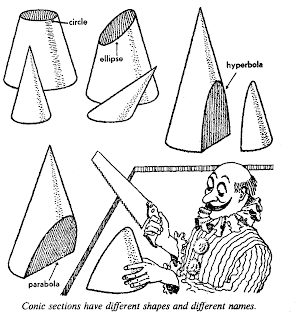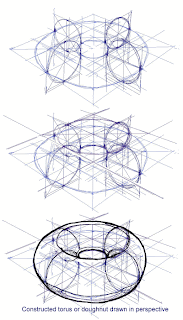This is the second post in a series about math and morality. You can see all posts in the series here.
I knew I’d get along with my soon-to-be friend Matt from our first discussion of theology. Matt was explaining why he saw paradox as the natural consequence finite humans trying to describe an infinite being, and he shifted right into the language of Flatland and topology.
“So imagine one religious group claims that God is a rectangle. And a rival sect claims that God is a circle. But there’s no reason to assume that God is confined to either of these ideas or that they represent a contradiction at all once you move beyond our limited perspective. God could be a cylinder, and each group simply had a different way of seeing him.”
This blind men and the elephant rhetoric can be useful, but it has some pretty difficult epistemological consequences. Once you adopt this way of way of conceiving of god is that it becomes almost impossible to rule out any possible property of God. If the circle and rectangle sects were joined by a new religious movement that claimed to have experienced God as a donut-shaped object, how would we decide if this was heresy or enlightenment? When would it be necessary to revise our idea of the hyperdimensional topological God? It would be terribly embarrassing to discover that we were supposed to be worshipping a torus this whole time!
There is no way to verify or test the topological structure of God. As long as a new idea can conceivably be harmonized with the old conceptions of God, it cannot be said to be untrue. The same uncertainty would hold for many properties of God. And, especially for such a high stakes question, this level of uncertainty is intolerable.
To gain tolerance, you are forced to sacrifice the possibility of judgment. People of faith are left in the same position as cultural relativists, unable to denounce any practice as fundamentally misguided or harmful. This framework of discussing God or any metaphysical concept ultimately rules out any possibility of useful discussions.

When we deal in abstractions, we need to confine our discussion to their projections into the observable universe. If two theories work equally well to explain our empirical observations of the world but have different metaphysical substructures, it is perfectly reasonable to choose one over the other on the basis of Occam’s Razor or any other aesthetic preference. The only way to choose between them is to devise an experiment whose results must be different depending on which universe we are living in. This is how the theory of the Big Bang won out over the Steady State model.
If two metaphysical theories make exactly the same predictions and do not differ on any point, I would question what is gained by differentiating between them (aside from thesis topics for philosophy PhDs).
For the rest of this series, I’m not going to dwell on the question of what kind of metaphysics underlies my ethics. I judge my theory by its correspondence with the observable world and trust that, if it is wrong, its flaws are either observable or irrelevant.
And tomorrow, I’ll finally be mixing some morality into this math lesson when I post on how we can experience and interpret moral strictures, even from our very limited perspective.
















